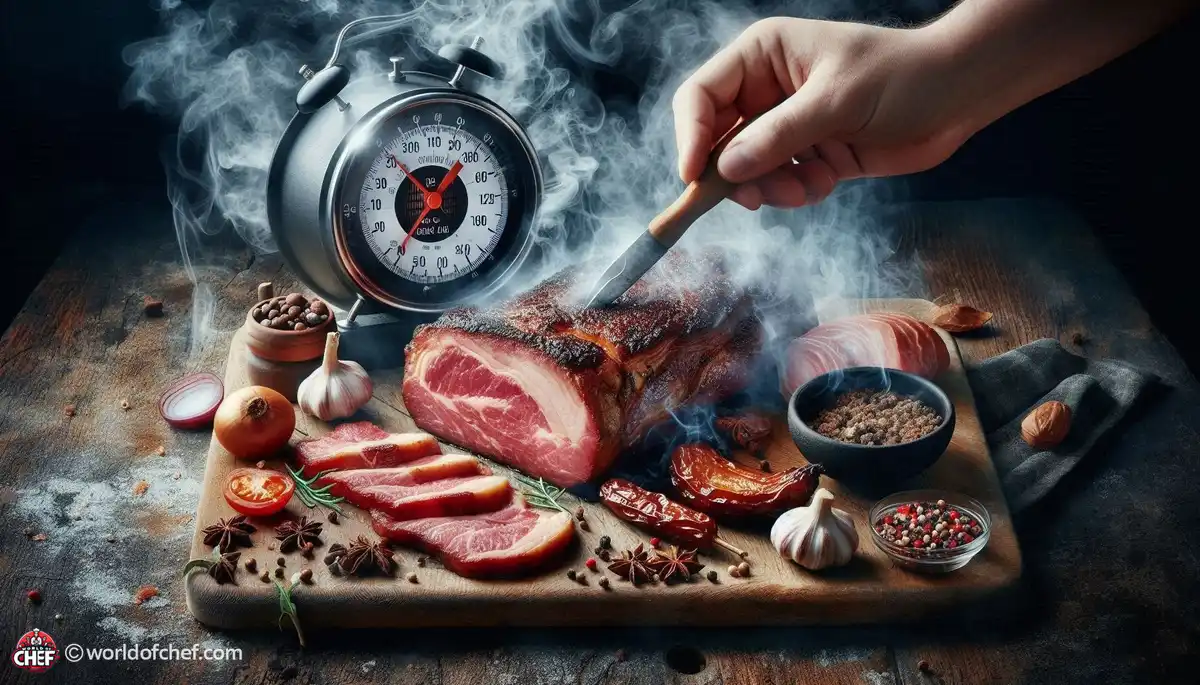
Simmering with Spices: Infusing Flavor into Your Dishes
Emery Donley - Oct 8, 2024 - 8 min read


Smoking is the culinary equivalent of alchemy in transforming raw ingredients into savory feasts. The basic concept is that food is exposed to smoke created by the combustion of wood or other flammable material. It's the nuance between the temperature and the timing of the process that transforms an ordinary dish into a great one.
Temperature is the conductor of flavors in smoked dishes. Too high and you burn the product; too low and it will either be undercooked or worse, flavorless. It's all a delicate balance between temperature and finesse. If one could perfect the nuance of temperature control, they would have mastered the piano keys as well, and every note played would determine the melody of taste.
Timing, they say, is everything. In the world of smoking, this couldn't be truer. Once your ingredients meet smoke, a culinary journey begins. Every passing minute is like a brush stroke on the canvas of flavor, deepening and characterizing what you are creating. It's not about patience but about intuition – knowing precisely when to intervene and letting nature take its course at the right time.
In the complex smoking dance, the ultimate attainment is the perfect balance in temperature and timing. In other words, it would be coaxing out those inherent flavors of the ingredient while infusing them with the smoky essence which elevates them to be considered culinary greats. Like a skilled artisan working with the delicate interplay of heat and time, these nuances are drawn out making each dish a masterpiece.
Behind all temperature control lies the foundation principle of heat transfer: conduction, convection, or radiation. The silent pirouet is the pirouet in which heat dances around in the chamber of the smoker as it wraps itself warmly around the ingredient. All these dynamics are what can be manipulated to give control over temperature with precision and finesse.
The fire is an artist of temperament; he must be understood and given his due. He holds power, and at times, he has to be controlled. This control doesn't mean throwing fuel but maintaining a fine balance throughout, constantly paying attention to it and making the needed adjustments. All decisions start from the selection of the wood to how the coals are aligned and play into the smoker's temperature profile.
In an age dominated by technology, smoking can't be an exemption. Sophisticated smokers have numerous features that make the control of temperature easier than ever before. Digital thermometers, auto-flow circuitry are the latest technological miracles in that they offer unprecedented precision and predictability, so anyone who doesn't smoke may achieve a pro result.
While technology does have its place in the world of smoking, there is a certain appeal to embracing the elemental. Traditional smokers, fueled by nothing more than wood and passion, provide a connection to the past that is as tangible as the smoke wafting through their chambers. For many purists, it's not about nostalgia with the manual temperature control-it's an homage to tradition and keeping the essence of smoking intact.
Timing, in the smoking context, goes way beyond seconds and minutes: it becomes a gentle and subtle relationship of flavor building with each passing minute. It might start as sharp and punchy at first with an intense smoky taste until the slow dance to eventually mellow it out while slowly cooling off the palate. With all this taken into account, this should be enough information to better unlock your inventions.
No two dancers move alike; no two ingredients react to smoke in the same way. The moisture content, fat content, and structure of the protein all determine the smoking time. While some ingredients thrive on long exposure to smoke, others require a more delicate touch. It's this intricate interplay between ingredient and technique that separates the amateur from the master.
When life gets frenetic with its fast pace, patience is in short supply. Not so in the world of smoking. Patience here is not just a virtue but a necessity. A person cannot smoke and leave creations to rest afterward. This is because resting after the dance with smoke will allow the flavors to be well developed and in harmony. Smoked dishes are, like fine wines, given a quiet period where the nuances have to melt and mature.
Just as the smoke haze vanishes and the time is approaching for that final moment, a pinch of fresh herbs, a dash of artisanal sauce, or even just a squeeze of citrus makes all the difference. In any case, finishing touches make it more than just mere food but works of culinary art. And not even this last act happens at the perfect timing. If the finishing touches are put before or after it has even been slightly off the mark, it throws flavors into disarray.
Smoking is one of the few techniques in culinary arts that rivals complexity and depth. From the subtle play of temperature and timing to the elemental dance of flavor development, smoking is at once science and art. Mastering the nuances of temperature control and timing unlocks a world of flavor beyond the ordinary for the discerning smoker. So the next time you start up the smoker, keep in mind that it is not mere cooking; it is almost magical.

Emery Donley - Oct 8, 2024 - 8 min read

Russell Comeaux - Oct 8, 2024 - 8 min read

Walter Backus - Oct 7, 2024 - 8 min read

Samantha Thames - Oct 7, 2024 - 6 min read